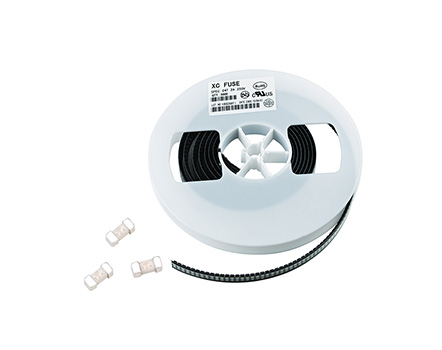
In many electronic devices, fuses are indispensable. Since Edison invented the first plug-in fuse in the 1890s, which enclosed thin wires in a lamp holder, the types of fuses have become more and more diverse, and their applications have become more and more widespread. Here are some common knowledge on fuse parameters, selection, and application. The rated values and performance indicators of fuses are determined based on laboratory conditions and acceptance specifications. There are multiple authoritative testing and appraisal institutions internationally, such as UL certification from Underwriters Laboratories in the United States, CSA certification from the Canadian Standards Association, MTTI certification from the Japan Department of International Trade and Industry, and ICE certification from the International Electrotechnical Commission. The selection of fuses involves the following factors: 1. Normal operating current. 2. The applied voltage applied to the fuse. 3. Abnormal current that requires the fuse to be disconnected. 4. The minimum and maximum time allowed for abnormal current to exist. 5. The ambient temperature of the fuse. 6. Pulse, impulse current, surge current, starting current, and circuit transient values. 7. Are there any special requirements that exceed the fuse specifications. 8. Dimensional limitations for installation structures. 9. Required certification body. 10. Fuse holder components: fuse clip, installation box, panel installation, etc. Below are some explanations of common parameters and terminology in fuse selection. Normal working current: When operating at 25 ℃, the current rating of the fuse is usually reduced by 25% to avoid harmful blowing. Most traditional fuses use materials with lower melting temperatures. Therefore, this type of fuse is relatively sensitive to changes in ambient temperature. For example, a fuse with a current rating of 10a typically cannot operate with a current greater than 7.5a at an ambient temperature of 25 ℃. Voltage rating: The voltage rating of a fuse must be equal to or greater than the effective circuit voltage. The general standard voltage rating series are 32v, 125v, 250v, and 600v. Resistance: The resistance of a fuse is not very important in the entire circuit. But for fuses with an amperage of less than 1, there will be several ohms of resistance, so this issue should be considered when using fuses in low-voltage circuits. Most fuses are made of positive temperature coefficient materials, so there are also two types of resistors: cold resistance and thermal resistance. Environmental temperature: The current carrying capacity of a fuse is tested at an ambient temperature of 25 ℃, which is influenced by changes in environmental temperature. The higher the ambient temperature, the higher the operating temperature of the fuse, the lower its current carrying capacity, and the shorter its lifespan. On the contrary, allowing it at lower temperatures will extend the lifespan of the fuse. Rated capacity of fuse: also known as breaking capacity. The rated fuse capacity is the maximum allowable current that a fuse can truly blow at rated voltage. When there is a short circuit, the fuse will pass multiple times an instantaneous overload current greater than the normal working current. During safe operation, it is required that the fuse remain intact (without bursting or breaking). Fuse performance: The performance of a fuse refers to the rapid response of the fuse to various current loads. Fuses are often classified into four types based on their performance: normal response, delayed disconnection, fast action, and current limitation. Harmful open circuit: often caused by incomplete analysis of the designed circuit. Among all the factors involved in fuse selection listed earlier, special attention must be paid to normal operating current, ambient temperature, and overload. When using, the selection of fuses should not be based solely on normal operating current and ambient temperature, but also on other usage conditions. For example, a common reason for harmful open circuits in conventional power sources is that the rated value of the nominal melting heat energy of the fuse is not fully considered, and it must also meet the requirements of the surge current generated by the input capacitor of the power supply smooth filtering on the fuse. If a fuse is to work safely and reliably, the melting heat energy of the fuse should not exceed 20% of the nominal melting heat energy rating of the fuse. Nominal melting heat energy: refers to the energy required to melt and break down components, expressed in i2t and read as "amperes per square second". Generally, in authoritative certification institutions, melting heat energy testing is required: apply a current increment to the fuse and measure the time of melting. If melting does not occur within approximately 0.008 seconds or more, the intensity of the pulse current will be increased. Repeat the experiment until the fuse blows within 0.008 seconds. The purpose of this test is to ensure that the generated thermal energy does not have enough time to escape from the fuse components through thermal conduction, that is, all the thermal energy is used to melt the fuse. Therefore, when selecting a fuse, in addition to considering the normal operating current, reduced rated value, and ambient temperature mentioned earlier, the i2t value should also be considered. Also note that as most fuses have welded joints, special care should be taken when welding these fuses. Excessive welding heat can cause the solder inside the fuse to flow back and change its rating. Fuses are similar to thermal sensitive components of semiconductors, so it is best to use a heat absorbing device when welding fuses.
Read recommendations:
tube amp blown fuse symptoms.Working principle of self recovery fuse